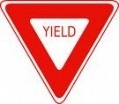
When someone describes something you learn once and never forget, that person often says, “It’s just like riding a bike!” Meaning you can just get on and pedal away and muscle memory will do the rest.
That’s kind of funny, when you think about it: a bike analogy used routinely every day, probably by hundreds of thousands of people who don’t actually get on a bike very often, if at all, in their adult routines.
How this is accurate: Your body does remember the balancing act you learned all those years ago. You can get on a bike after years of not riding and pedal away—perhaps a bit shaky, perhaps having lost the ability to ride hands-free that you practiced and practiced and practiced in the street in front of your house, but still having the fundamental physical skills.
How this is not accurate: You most likely learned to ride a bike as a little kid. You knew nothing about the rules of the road except what your parents told you. You had never interacted with traffic as a driver. You may not even have crossed the street by yourself yet if you learned at a really young age. Your parents presumably (possibly) taught you the basic hand signals (although I don’t think mine did—when I was little we lived in the wheat and alfalfa country outside of Lewiston and there wasn’t enough traffic to warrant much signaling—I was faster than a combine or harvester).
(I remember riding last summer behind another woman on a bike who confidently signaled her right turn with the upraised bent arm–and promptly turned left. Good thing I wasn’t close enough to be counting on her to execute the maneuver she had signaled.)
Those physical skills from your childhood aren’t enough, though, for navigating city streets as an adult. You’re much more aware of the potential danger and you know more about the traffic flow, but you may not know much more about bike law than you did as a kid, particularly if you took your driver’s test a long time ago. It’s only in recent years that they started including bike-related questions on the driver’s license test.
You may misremember or misapply rules you think you know, too. I’ve seen adults riding against traffic because they’re thinking like pedestrians, but bikes are vehicles and should ride with the flow of traffic. And some places have special local rules, like the City of Spokane’s ordinances requiring you to wear a helmet and forbidding riding on sidewalks in the central business district downtown.
When I moved back to Spokane from Coeur d’Alene years ago, I remember my nephew—who had made the move before me—warning me, “It’s weird—there are lots of bike questions on the driver’s test!” We both wondered why that was. Well, now I know—it’s because drivers need to know the rights and responsibilities of people on bikes. People on bikes need to know, too.
Because riding a bike isn’t exactly, well, just like riding a bike.
Related Reading
- List of links to Washington bike laws
- Don’t Do This! A Post in Which I Complain About People on Bikes
- That Was No Accident
- City of Spokane helmet ordinance
- City of Spokane downtown sidewalk ordinance
Your Turn
- What do you remember about learning to ride a bike as a kid?
- What do you wish more people on bikes knew about bike laws?










I fully agree with you about bike skills. Looking back over the past three years I have been riding a road bike as an adult, I realise the only thing I really learnt as a child was to balance on those two wheels. Everything else I’ve learnt bit by bit mainly from fellow riders in the past three years.